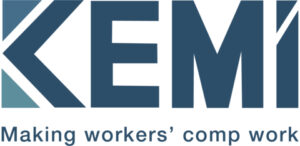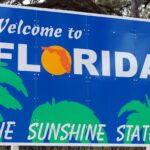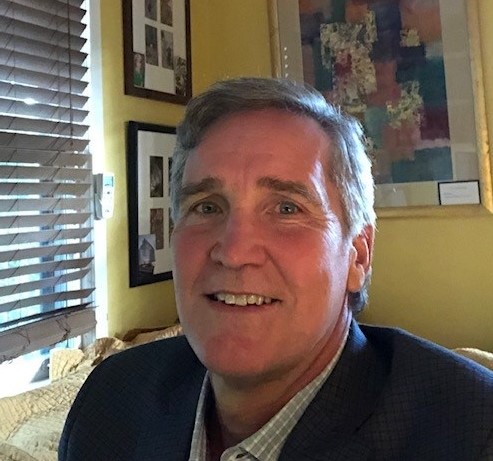State Supreme Court reviews of workers’ compensation cases are rare, but in Kentucky last week, the state high court handed down no fewer than three opinions – all of which emphasize long-established case law. The court ruled against an insurer in one case and in favor of the carriers in two other cases.
In one of the most severe cases of COVID-19 infection, in which a steel mill worker died after receiving a double-lung transplant, the court upheld an administrative law judge and the state Workers’ Compensation Board. The high court found that the estate of the unvaccinated worker did not prove that the disease was work-related, absolving the insurer of the responsibility for benefits.
“The ALJ’s finding and evidence on record demonstrated Appellant failed to meet the preponderance of the evidence burden-of-proof standard on the threshold issue of a work-related causation in this instance,” Justice Michelle Keller wrote in the opinion.
Kentucky statutes make it clear that occupational diseases must arise out of the worker’s employment, the court noted.
“Amid the heartbreaking fallout of Covid and with deep condolences for all those affected, for the foregoing reasons, we affirm the Court of Appeals’ decision upholding the Board’s agreement with the ALJ’s dismissal of the Estate of Kyle Perkins’ claim for benefits for failing to prove a work-related injury,” the opinion concludes.
 Kyle Perkins was a maintenance worker at the North American Stainless mill in Ghent, Kentucky, in 2021 when he fell ill. At the hospital, he tested positive for COVID. His co-worker on the maintenance team also was diagnosed with COVID but did not endure such severe symptoms.
Kyle Perkins was a maintenance worker at the North American Stainless mill in Ghent, Kentucky, in 2021 when he fell ill. At the hospital, he tested positive for COVID. His co-worker on the maintenance team also was diagnosed with COVID but did not endure such severe symptoms.
The comp board and the courts noted that Perkins’ exposure to COVID was no greater than the general public’s exposure to the disease, which was sweeping the planet at the time. North American Stainless, in fact, had encouraged its workers to get vaccinated, incentivized the vaccinations, provided on-site vaccines and canceled company gatherings. The steel firm also required its workers to wear face coverings.
But Perkins did not get vaccinated. At one point, he was written up by a plant security guard for failing to wear a mask at work. The estate’s case was weakened by Perkins’ text messages, suggesting he and his wife contracted the disease from a crowded race event they had attended in August 2021. His wife also testified that they had been out to eat and attended outdoor soccer games.
“We are both still in the hospital..wonder if we should tell hr that so they don’t think we have it a work..cause she was down there too,” reads one text from Perkins to his co-worker.
The Perkins estate lawyers also argued that COVID was exacerbated by the mill’s work conditions. But the jurists at every stage of the adjudication did not buy into that argument.
“Because Kyle remained at home once his symptoms materialized, no aggravation existed, therefore, application of the Dealers ‘increased risk’ test is actually immaterial to the facts at hand,” the high court wrote, citing a 1979 court decision known as Dealers Transport Co. v. Thompson.
All justices concurred in the Oct. 23 opinion. Attorneys for North American Steel could not be reached for comment Monday. The steel company’s workers’ comp insurer was not named in the appeal.
 If Perkins’ estate had prevailed in the case, his survivors would likely have been eligible for up to $110,000 in burial expenses, one of the most generous burial benefits in the country, according to the Workers’ Compensation Research Institute. His spouse also would have been eligible for 40% of his average weekly wage, up to the maximum allowed for total disability.
If Perkins’ estate had prevailed in the case, his survivors would likely have been eligible for up to $110,000 in burial expenses, one of the most generous burial benefits in the country, according to the Workers’ Compensation Research Institute. His spouse also would have been eligible for 40% of his average weekly wage, up to the maximum allowed for total disability.
In two other cases, the Kentucky Employers Mutual Insurance, or KEMI, the largest workers’ comp insurer in the state, won one decision and lost one that examined which insurance company was liable for benefits.
In Encova Mutual Insurance vs. Hall, the state Supreme Court upheld lower court rulings in the case of a retired teacher who was exposed to asbestos. The teacher had argued that he developed mesothelioma from exposure before 2003, when he ceased full-time teaching. That would have made KEMI the responsible carrier. But an administrative law judge found that the last injurious exposure came in 2014, during the man’s substitute teaching, when Encova was the insurance carrier.
KEMI sought to have Ohio-based Encova certified as the responsible insurer. But an administrative law judge and the state Workers’ Compensation Board denied that, noting that neither insurer had standing. The Kentucky Court of Appeals reversed, finding that the board and the ALJ do, in fact, have the authority to determine the carrier. Last week, the high court affirmed and remanded the case to the comp board for further action.
“In sum, the Board’s refusal to certify coverage contradicts the law, and ‘law trumps equity,'” the Supreme Court wrote in the opinion.
“Once the ALJ concluded Hall’s exposure continued into April 2014—during Encova’s coverage period—Chapter 342 imposed liability on Encova,” the justices noted.
Without certification, though, KEMI would have been forced to bear the financial burden even though it was not the statuorily obligated carrier.
In a third case, the justices held that KEMI is the responsible carrier, even though the worker was employed out of state for a time. A coal mine worker had begun to develop hearing loss in Kentucky, then worked with the same employer in Alabama for nine months before retiring.
The comp board, an appeals court and the state Supreme Court all agreed that Kentucky law, as famously amended in 2018, and Kentucky appeals court rulings are clear: A worker must be exposed to hazardous noise at a place of employment for at least one year before a presumption kicks in. KEMI attorneys had argued that the Alabama coverage should have applied.
“KEMI makes a logical fallacy when it asserts that … the relevant question is whether the worker’s last exposure, regardless of its length, meets the statutory definition of ‘injurious exposure,'” the court noted in the decision. “The only way to overcome the statutory presumption in KRS 342.7305(4) is to find that the injury, not an injurious exposure, actually occurred at a different point in time than that which is statutorily presumed. That was not the case here.”
Because the hearing injury occurred while the worker was employed by Clas Coal in Kentucky, Kentucky has jurisdiction over the hearing loss claim, the justices wrote. Because KEMI was the insurer for Clas Coal on January 1, 2020, it is the carrier at risk on Stidham’s hearing loss claim.
Topics Workers' Compensation Kentucky
Was this article valuable?
Here are more articles you may enjoy.



 Airline Pilots Hide Mental Health Struggles to Keep Flying
Airline Pilots Hide Mental Health Struggles to Keep Flying  Baldwin Group to Buy CAC Group for About $1B in Cash and Stock
Baldwin Group to Buy CAC Group for About $1B in Cash and Stock  Pierce Named CEO of GEICO as Combs Resigns
Pierce Named CEO of GEICO as Combs Resigns  Surveys Show Concerns About Florida Market, But Consumers Are Warming Up
Surveys Show Concerns About Florida Market, But Consumers Are Warming Up 


